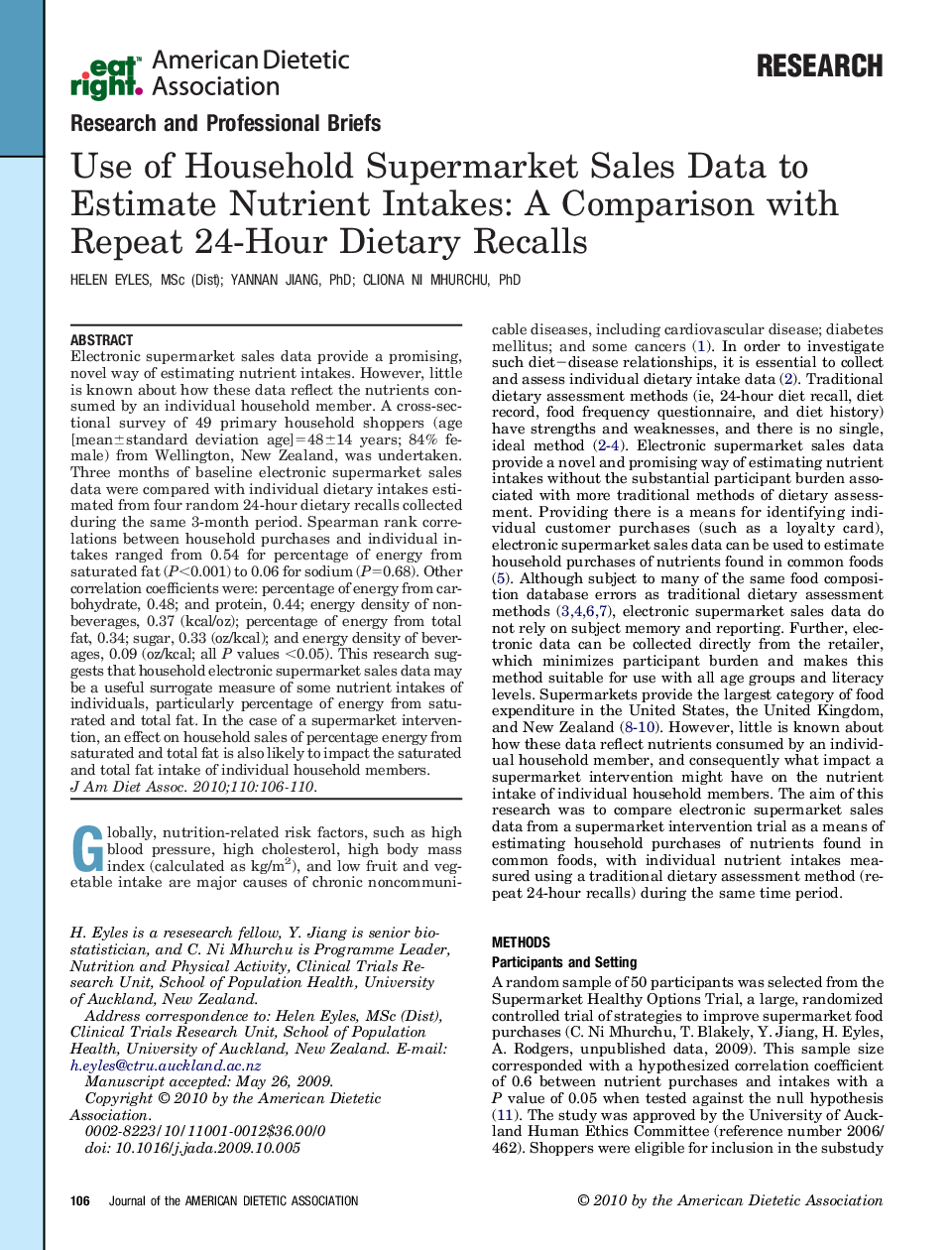| Article ID | Journal | Published Year | Pages | File Type |
|---|---|---|---|---|
| 2655655 | Journal of the American Dietetic Association | 2010 | 5 Pages |
Electronic supermarket sales data provide a promising, novel way of estimating nutrient intakes. However, little is known about how these data reflect the nutrients consumed by an individual household member. A cross-sectional survey of 49 primary household shoppers (age [mean±standard deviation age]=48±14 years; 84% female) from Wellington, New Zealand, was undertaken. Three months of baseline electronic supermarket sales data were compared with individual dietary intakes estimated from four random 24-hour dietary recalls collected during the same 3-month period. Spearman rank correlations between household purchases and individual intakes ranged from 0.54 for percentage of energy from saturated fat (P<0.001) to 0.06 for sodium (P=0.68). Other correlation coefficients were: percentage of energy from carbohydrate, 0.48; and protein, 0.44; energy density of nonbeverages, 0.37 (kcal/oz); percentage of energy from total fat, 0.34; sugar, 0.33 (oz/kcal); and energy density of beverages, 0.09 (oz/kcal; all P values <0.05). This research suggests that household electronic supermarket sales data may be a useful surrogate measure of some nutrient intakes of individuals, particularly percentage of energy from saturated and total fat. In the case of a supermarket intervention, an effect on household sales of percentage energy from saturated and total fat is also likely to impact the saturated and total fat intake of individual household members.
